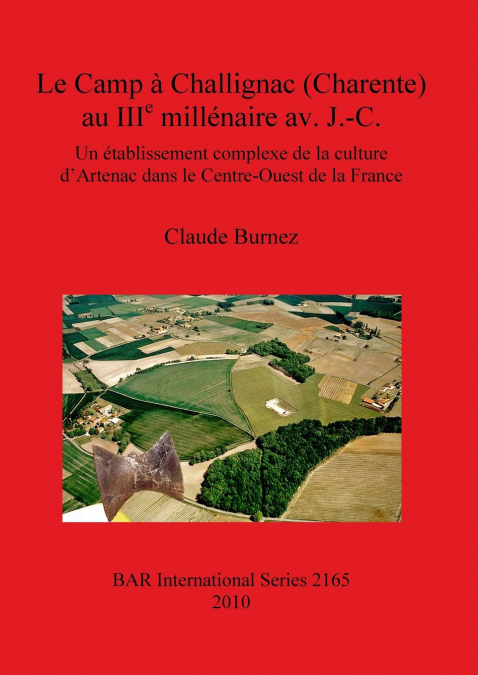
 Librería Desdémona
Librería Desdémona
 Librería Samer Atenea
Librería Samer Atenea
 Librería Aciertas (Toledo)
Librería Aciertas (Toledo)
 Kálamo Books
Kálamo Books
 Librería Perelló (Valencia)
Librería Perelló (Valencia)
 Librería Elías (Asturias)
Librería Elías (Asturias)
 Donde los libros
Donde los libros
 Librería Kolima (Madrid)
Librería Kolima (Madrid)
 Librería Proteo (Málaga)
Librería Proteo (Málaga)
Un établissement complexe de la culture d’Artenac dans le Centre-Ouest de la FranceThis fortified enclosure has been known since the middle of the 19th century, but the size and the state of preservation (with the height of the rampart estimated optimistically at 10 metres!) suggested an attribution to the Gallo-Romans or a 'Camp des Anglais'. Extensive woodland covered the major part of the site, and it is only recently during modern clearance undertaken in order to expand agricultural land that prehistoric artefacts dating from the Late Neolithic were brought to the surface and attributed to the Artenac culture (third millennium BC). At that moment a rampart more than three metres in height was revealed. The excavation of the ditched enclosures at Diconche (Saintes, Charente-Maritime) published in 1999 revealed the previously unrecognized importance of the areas of habitation belonging to this period. At Le Camp the construction above the natural surface can be compared to the fortified spurs which had previously been chronologically attached to the Late Neolithic. It should be mentioned that a site situated not far away, Le Gros Bost at Saint-Méard-de-Dronne, had revealed structures of the same nature during a trial dig in 1994. At Le Camp, the first excavation in 1994/1995 confirmed the originality and the interest of this type of site. Consequently an excavation was undertaken from 1996 to 2000 under the direction of Claude Burnez, and this was followed by a second operation directed by Catherine Louboutin (2002/2003). This publication concerns the first of these operations and the pottery from the second. It is now possible, taking into consideration the material found both at Diconche and Le Camp, to propose an evolution that includes the flint artefacts, the pottery and the dwelling structures of Artenac: Artenac I: first period before the Bell Beakers; Artenac II: a period which was influenced directly or indirectly by the Bell Beakers; Artenac III: a third period post-Bell Beakers. This period which was found homogeneously present (forty thousand sherds) in structure XVIII during the 2002/2003 excavation is characterised by the absence of plates. Numerous bottles, lids -the only decorated finds- 'nose-shaped' lugs and waved shoulders and the rarity of the flint are to be noted. This material was accompanied by the doliums and pigs' feet. Given the negative characteristics of this assemblage, it is difficult to isolate them among the levels containing multiple occupations, as was the case during the 1994/2000 excavations. It is of great importance to insist upon the complete absence of the Bell Beakers' influence and the exclusive presence of original Artenacien pottery. The sites situated outside the Charente/Périgord area, such as Fort Harrouard, Les Vaux à Moulin-sur-Céphons, Cavignac in Gironde and Marsa at Beauregard (Lot), would appear to belong to this latter category. The contributors to the volume are Alain Villes, François Fischer, Céline Landreau, Séverine Braguier, José Gomez de Soto, Bernard et Thérèse Bourgueil and Emmanuelle Boulestin.